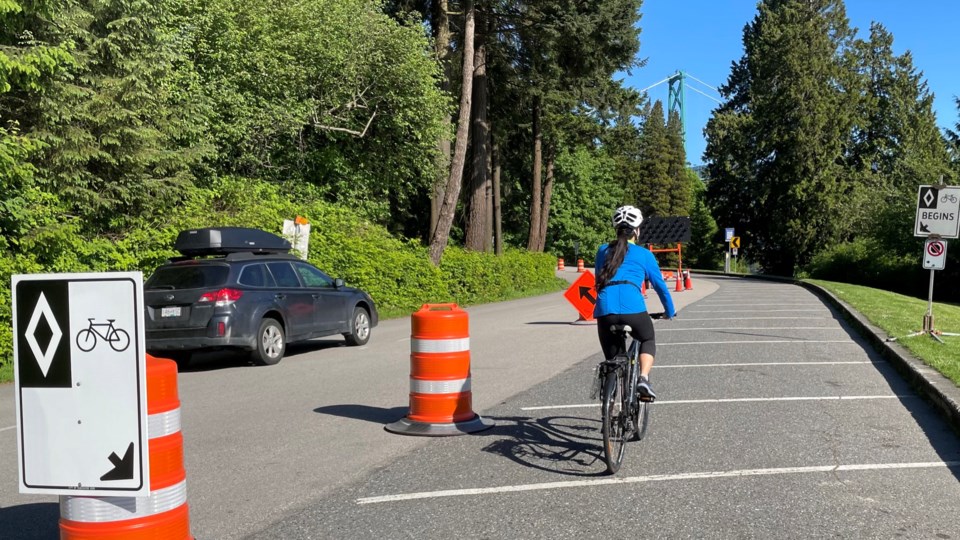Fire insurance, flood insurance, car insurance — paying upfront for something that hasn't happened yet can feel like an endless bill. But after a high-profile case of a cyclist forced to pay half the costs of getting run over by a car, it appears some British Columbians are ready to pay up.
Ben Bolliger says he was cycling to grab lunch at Granville Island in July 2021 when a driver failed to stop their vehicle at the stop sign and collided with him.
“It was a terrible ordeal. I was thrown about 14 to 15 metres and landed on a curb. My bike was snapped right in half and I will never, ever have full range of motion in my right hand again,” he said.
Then to his surprise, he received a bill for $3,752 from ICBC stating that he was “responsible for any resulting damage or injury sustained by our [ICBC's] insured” and that because he does not have insurance coverage he “must repay the cost of our insured’s claim.”
While Bolliger says cyclists need to know they have options, his story appears to have struck a nerve.
After Glacier Media published his story, one insurance company received a flood of calls.
With more Canadian cyclists than ever purchasing liability insurance, president Keith Bossaer says it appears British Columbians are leading the charge — do cyclists really need insurance?
Do pedal bike owners need coverage?
For anyone riding a simple pedal bike, Bossaer says insurance, like Pedal Power Insurance, can be purchased for cyclists and will protect you against liability, damages and injuries.
Typical homeowner insurance or tenant insurance does not give you coverage; if you were to get in a collision, you could be on the hook for damage, theft, liability and injury.
Do I need to get insured if I own an e-bike?
What goes for pedal bikes goes for electric bikes.
According to ICBC, you don’t have to have a driver’s licence and you don't need to register your e-bike. A licence and insurance aren't required for your motor-assisted cycle either.
But if you are in a collision while on an electric bike you will be subject to the same rules and duties as the driver of a motor vehicle.
This applies to e-bikes that do not exceed 500 watts total.
There are different rules for limited-speed motorcycles, such as mopeds and scoots, which can be found on .
Why should I purchase cycling insurance?
Instead of adding cycling coverage to your current tenant or homeowner insurance, some experts recommend purchasing separate coverage.
Bossaer says this is a good option for people who aren’t renting or don’t have a home. It also can be a smart move for people who don’t want their insurance policy to change if something were to happen to their bicycle.
"It keeps insurance claims separate from their house or tenant insurance,” he says.
What happens if I’m in a collision with my bike and I’m uninsured?
If your vehicle is not insured and you are in a collision, ICBC can bill you the cost of the insured person’s claim.
This falls under section 178 of the Insurance Vehicle Act, and ICBC states it has the right to “recover” the cost.
If a bill is not paid, ICBC can take legal action against you, and if they do not hear from you within 15 days of a bill being sent out, they can refer the claim to their account services department for recovery of the debt.
How much does this kind of insurance typically cost?
Power Pedal insurance ranges from $20 to $40 for the year and gives the standard one million dollars liability protection.
“It is fairly inexpensive,” says Bossaer.
“The website will show you your options and it depends on the circumstance for the liability,” he says.
Do most cyclists have insurance?
Power Pedal Insurance was created a few years ago and has been growing, even doubling across Canada in some years.
"There are a lot more people going to it now,” says Bossaer. "It has been a rapidly growing product for us for some time in Canada.”
Other organizations like the Horse Council B.C., offer $5,000,000 of insurance and offers a similar model for coverage.
What are the other options to protect me?
It might be time to invest in a dash camera for cycling, similar to ones used in vehicles in case of a collision.

